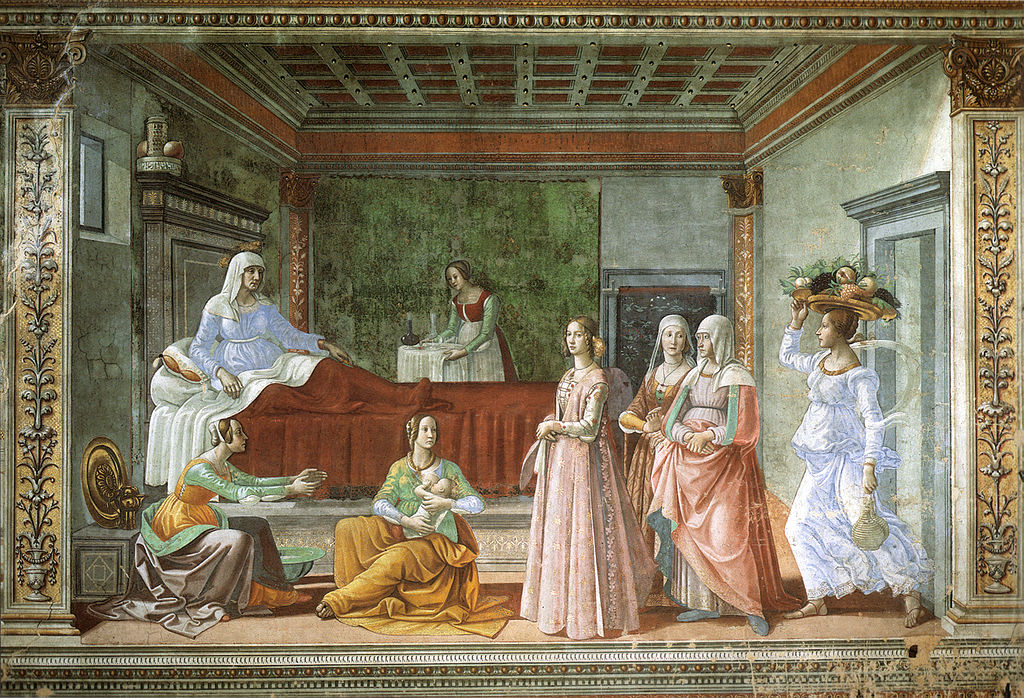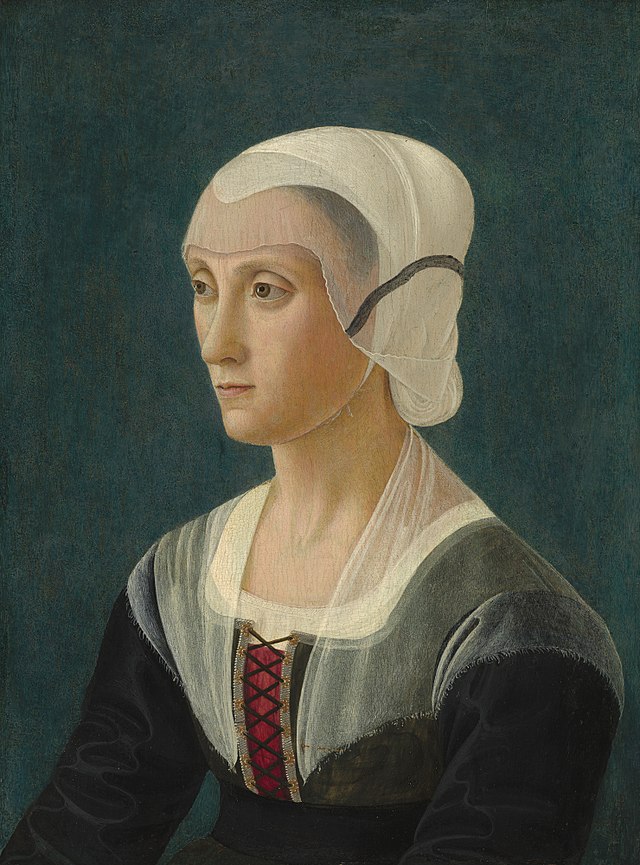
In a time when it was difficult for women to have significant political power, Lucrezia Tornabuoni (pictured with a headdress on the bottom right) was a respected advisor, businesswoman, poet, and matriarch. Her wisdom supported the Medici line, establishing its influence in the Renaissance era.
WHo is Lucrezia?
Lucrezia Tornabuoni was born in 1427 to two major Florentine families, the Pittis and the Tornabuonis. When she was married to Piero di Cosimo de Medici at the age of 17, she brought a large dowry and political power. Most significantly, she came with keen intelligence. Lucrezia was a well-learned woman. She was knowledgeable in mathematics, finances, literature, and the arts. She also knew Greek and Latin as well as her native Italian.

Lucrezia’s Impact on The Medici dynasty
She used her strength of mind to help her husband. Piero became bedridden early in his rule and relied greatly upon his wife. They turned their bedroom into a kind of court, where he would have diplomatic meetings. Lucrezia would be there to encourage diplomacy between families and political parties. She also advised him on multiple political and financial issues.
This was not a common happenstance in a male-centered society, but Lucrezia was able to prove her competence despite the odds. She impressed many of the men who met her, including her father-in-law, Cosimo Medici.
Outside the makeshift court, she was a businesswoman with her own running income. She owned several stretches of land, leased these areas, and bought businesses, shops, and farms. She also leased a bathhouse and had it renovated. During its development, she visited to insure its success.
Lucrezia invested much of her time and money into Florence’s culture and people. This included being a great patron of the arts and consistent philanthropy.
She commissioned various creatives, including the artist Luigi Pulci and poets Bernardo Bellincioni and Angelo Poliziano. She also sent sculptures and funded commissions for religious institutions.
As a philanthropist, she created charities for mothers and orphans through the church. She even provided underprivileged women with dowries so that they could be married.
When she wasn’t helping her husband rule Florence or conducting business, she was a poet, playwright, and storyteller. Much of her works were focused on religious figures.
She gravitated towards Saint John the Baptist and several outstanding heroines in the bible like Esther and Judith. Often, she would draw comparisons with her own experiences to add a personal and creative spin.
After her death, a few of her poems were added to music and made into popular songs. Before then, she would read them to her children and grandchildren.
Lucrezia had four children who grew to adulthood and many grandchildren. Her son, Lorenzo became the ruler after her husband had passed. He is often referred to as Lorenzo the Magnificent. Just as she had with her husband, Lucrezia was a great advisor to him.
She had made careful plans for her children’s education and marriage. This helped prepare Lorenzo for rule and encouraged him to rely on her judgment. In fact, he lamented that he had lost his refuge when she passed in 1482.
Looking at her life and accomplishments, it is amazing to see how much Lucrezia was able to do for herself and her family. She proved that women have always had the ability to be powerful political powers. Incredibly, she did so with grace and kindness.
Her charity, wisdom, and patronage showed that power and goodness can go hand in hand. Even hundreds of years later, she is an icon of womanhood.
Want to Learn More?
If you would like to know more about the Medici family, check out one of your walking tours. The Medici Dynasty had a profound influence on Florence. A certified tour guide can lead you through their history. Ask about the stand-out women in the family, like Eleonora da Toledo.

Recent Comments